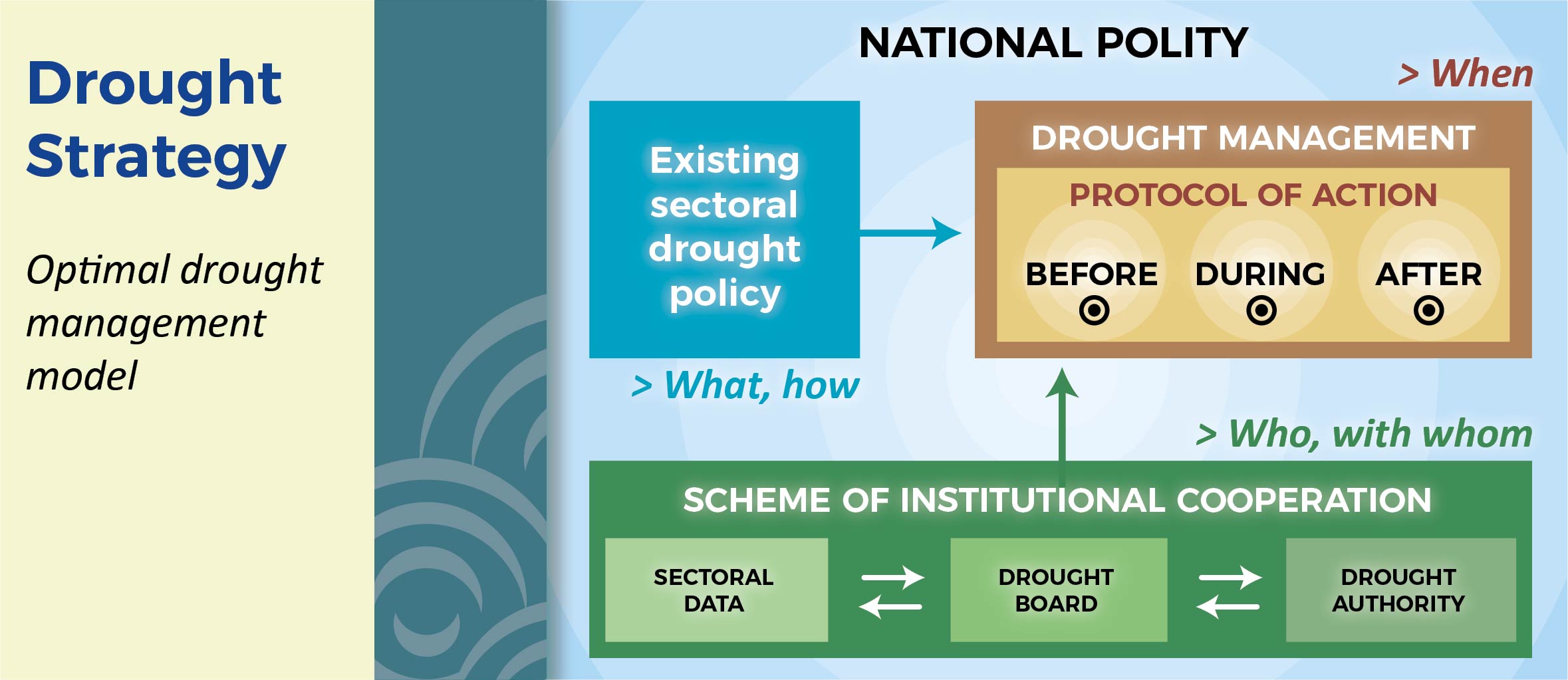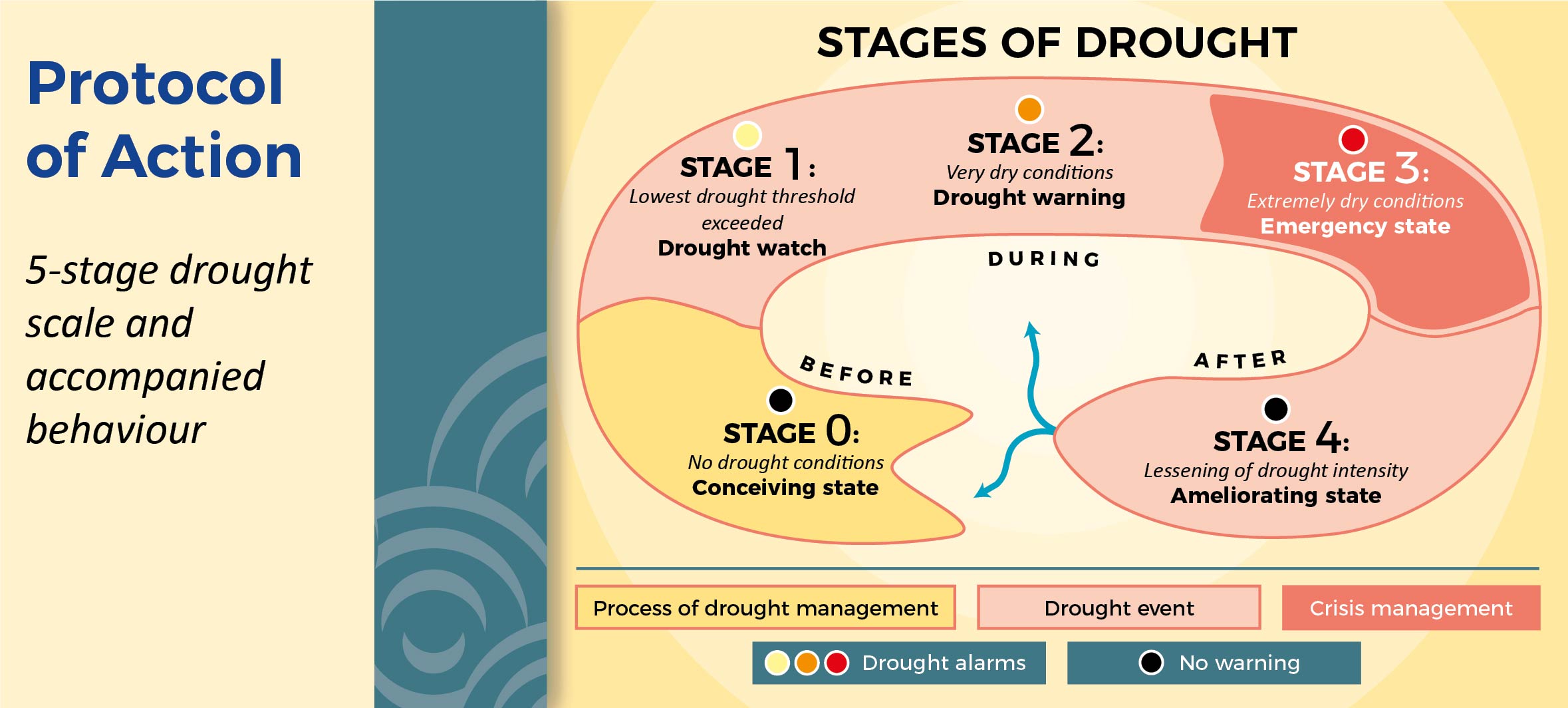DriDanube - DriDanube Drought Strategy
18-06-2019
„Drought management starts already at the stage when there are no signs of drought at all and we may think sufficient water conditions are going to last. However, they will come to an end eventually so it is already during that time when we need to raise awareness that water is not a granted good.“ said Andreja Moderc from the Slovenian Environment Agency (ARSO) at the Danube Drought Conference.
The shift that DriDanube project wants to bring is that we will not be only reacting to the damages caused by drought but start acting ahead of the crisis and get prepared in advance.
Knowing whether there is drought or not and detecting its actual stage is the basic prerequisite of the successful drought management. Knowing who is doing what and when in each respective stage and the shared understanding of responsibilites is an equally imporant condition of success. DriDanube is working on both issues - project partners have developed an innovative tool Drought Watch that will help detecting drought and they are also working on developing a Strategy which will give clear guidance for overcoming the gaps in the drought decision-making processes and improve drought emergency response in the Danube region. The added value of the document is that it has been compiled together with the stakeholders at 30 national seminars and trainings and at 2 international conferences.
OPTIMAL DROUGHT MANAGEMENT MODEL
Drought Strategy is a document proposing a new framework for improved drought management in the Danube region. It includes an Optimal Drought Management Model, a concept of how drought management would optimally function to comprehensively tackle drought management issues. The model addresses institutions within the institutional scheme to jointly implement drought policies in a way as specified in protocol of actions, and therefore has 3 main elements. It organizes already-existing legislation and institutions in a country in an optimal way of cooperating and reacting in different stages of drought risk management: from acting preventively during time of no-drought conditions, early response upon its first signals and further development, and during mitigation and evaluation process. However, for effective drought management everybody involved needs to understand who is doing what and when during each stage of drought.

SCHEME OF INSTITUTIONAL COOPERATION
Wholesome drought management requires an established structure of competent institutions and their cooperation, through which existing national drought policies are implemented. This structure should define who is involved in the implementation of drought policies, what are their roles, responsibilities and inter-institutional connections. Therefore, optimal drought management model proposes a 3-level scheme of institutional cooperation into which all institutions are nominated who can either be affected by drought, monitor, manage, analyze it or educate about it, and are therefore accredited to carry out drought-related roles.
Drought management begins already with the very level of collecting sectoral data and information about the current state of drought. Into it, all competent institutions are nominated who are a direct subject to drought, can be public or private, i.e. water supply companies, power plants, food manufacturing companies, faculties, civil protection... Therefore, it is the base level of the scheme where all sectoral drought data and information in a country origin.
Second, middle level represents the Inter-sectoral Drought Advisory Board which implements the regular tasks at a national level. It consists of national Drought Office and National Drought Committee. Drought Office is the basis on which the advisory body works and where a few people are appointed for regular work. Their main task is regularly collecting sectoral reports/data and their compilation into bulletins or other forms that is preferable by individual country. When they notice potential risk situation for any of the sectors, the Office calls for meetings of the Drought Committee. It presents a board of representatives of organisations from the base level, with at least one per sector recommended. Their main task is to review the situation and issue technological recommendations to the base level (yellow drought alert) in case the situation per sectors is potentially risky. Therefore, first-step measures are taken at this level already. If the situation keeps worsening, their task would be to brief and propose the announcement of orange or red drought alert to the National Drought Authority.
National Drought Authority takes country-level decisions and therefore presents the third, highest level of drought management in a country. Its main task is the announcement of higher drought alerts (orange or red) which should automatically evoke implementation of measures or even restrictions by companies, institutions and general public in a country. For this reason, the National Drought Authority role can be given to a body or a group of representatives who have a legal mandate for an official announcement of disaster or danger, i.e. ministry of defence, civil protection authority or country president.
PROTOCOL OF ACTION
The Strategy defines also a protocol of action, the driving force of the model – it rounds up model’s ‚what & how‘ (drought policies) and ‚who & with whom‘ (institutional scheme) into ‚when‘ these activities are carried out. It is formed in a manner of 5-stage drought scale of its development and accompanied behaviour that institutional scheme should adopt. Drought stages in the protocol are separated by thresholds which are freely defined by individual country, taking into account their national characteristics (climate, soil, vulnerability etc).

Stage 0 - Conceiving state presents no drought or even wet conditions. In this stage, ongoing measurements take place and it presents great period of time for farmers, advisories, company officials etc. being further educated, workshops held, public awareness raised that water is not a taken-for-granted goods. Stage 1 - Drought watch represent the situation when monitored data exceed the lowest drought threshold and moderate drought conditions take place. In this situation, we should monitor the conditions even more closely and the Drought Committee issues technological recommendations. If the situation keeps progressing to very dry conditions, stage 2 - Drought warning occurs when the announcement of orange drought alert evokes implementation of stricter measures. In stage 3 - Emergency state extremely dry conditions trigger announcement of a red drought alert and restriction activities by National Drought Authority. Stage 4 - Ameliorating state presents lessening of extremely dry conditions and our activities are focused on mitigating measures. After stage 4, continuous monitoring may reveal we are either back to stage 0 and preventive actions start taking place again, or that drought conditions may not fully decrease to a normal state before starting to intensify again. Thus, it may leave us returning to stage 1 or 2 when we work proactively to hopefully prevent getting into further stages.
FINAL THOUGHTS
In recent decades, a great progress has been made in improving monitoring of drought (detection of drought stage 1) through remote sensing, improved models etc, while the behaviour part of that stage has not improved accordingly. At present, we manage drought through crisis approach since the legislation covers drought issue and the institutions are activated mostly when drought intensity is already alarming (stages 3-4), even though the drought event began with its first signals in stage 1 already.
By clearly defining our activities and roles and thus weighing the first part of the protocol (stages 0-2), country’s approach changes from crisis to proactive.
